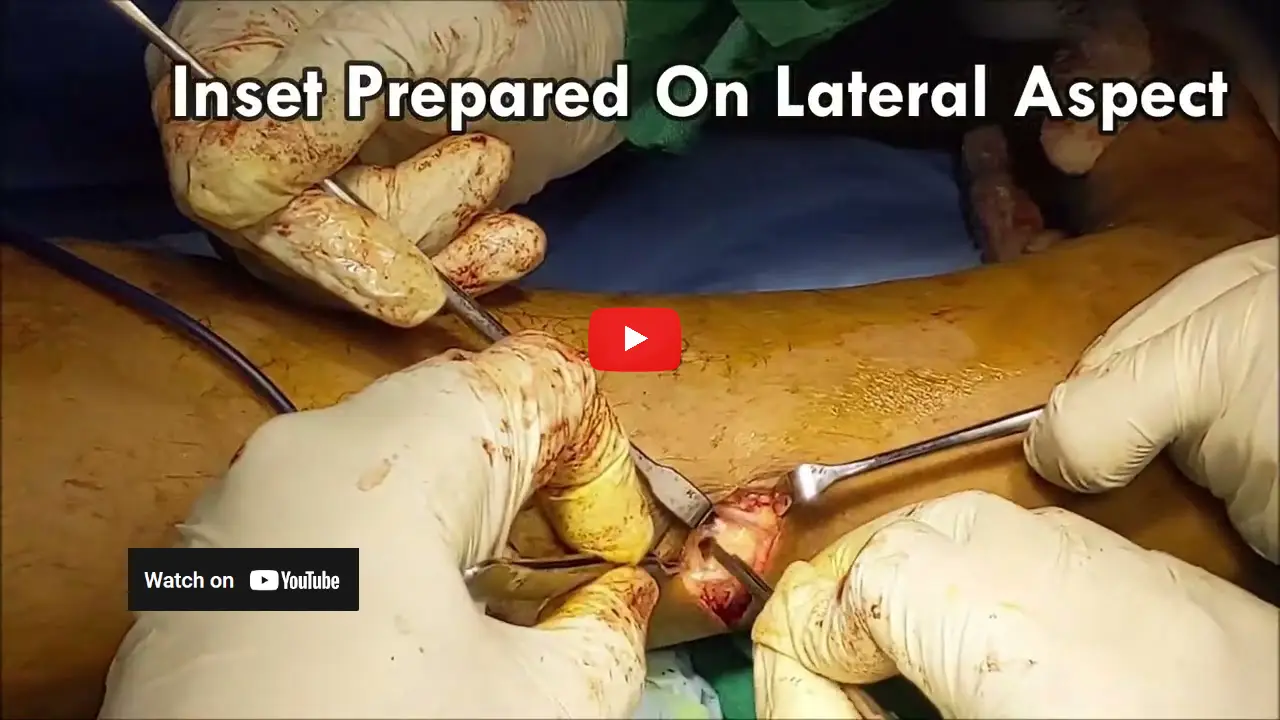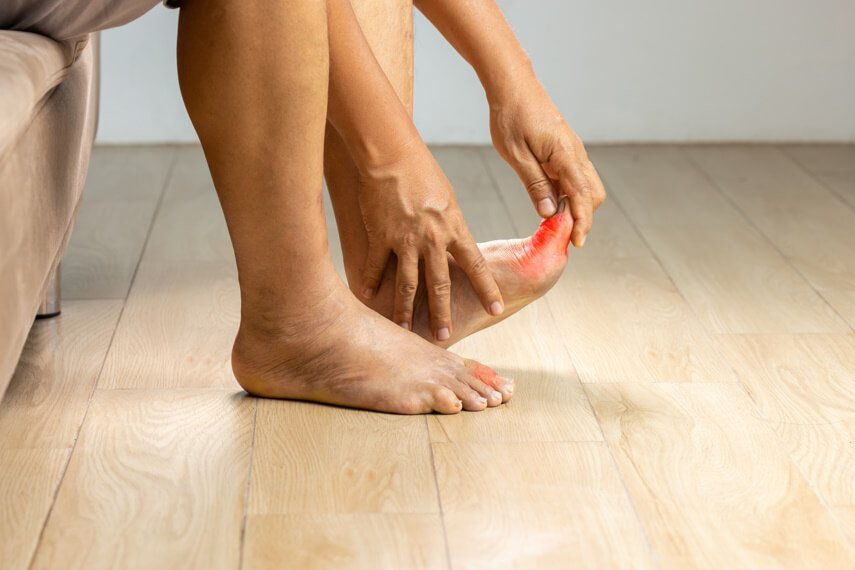Understanding Tenotomy: A Comprehensive Guide
Imagine experiencing persistent tendon pain that hinders your daily activities and resists conventional treatments. Such discomfort can significantly impact your quality of life, making simple tasks challenging. One medical procedure that has been effective in addressing certain tendon-related issues is tenotomy. This surgical intervention involves cutting a tendon to relieve pain or correct deformities. At Surat Diabetic Foot and Ulcer Clinic, led by Dr. Ashutosh Shah, we specialise in providing comprehensive care for various foot-related conditions, including those requiring tenotomy. Understanding the nuances of this procedure can help patients make informed decisions about their health.
What is Tenotomy?
Tenotomy is a surgical procedure that involves the deliberate cutting of a tendon to alleviate pain, correct deformities, or improve range of motion. Tendons are robust, fibrous tissues that connect muscles to bones, facilitating movement. When a tendon becomes overly tight or damaged, it can lead to restricted movement and discomfort. By performing a tenotomy, surgeons aim to release this tension, thereby restoring function and reducing pain. This procedure is often considered when non-surgical treatments, such as physical therapy or medications, have failed to provide relief.
Types of Tenotomy
Tenotomy procedures can be categorized based on the technique used and the specific tendon involved:
- Percutaneous Tenotomy: This minimally invasive approach involves inserting a needle through the skin to make small cuts in the tendon. It's often guided by ultrasound to ensure precision. This method is commonly used for conditions like tennis elbow or Achilles tendinopathy.
- Open Tenotomy: In this traditional method, a surgeon makes an incision over the affected tendon to access and cut it directly. This approach may be necessary for more severe cases or when additional procedures, such as tendon repair, are required.
- Ultrasonic Tenotomy: This modern technique utilises ultrasonic energy to break down and remove damaged tendon tissue. It's performed percutaneously and is known for reducing recovery times and minimizing complications.
The choice of tenotomy type depends on various factors, including the patient's condition, the specific tendon involved, and the surgeon's expertise. At Surat Diabetic Foot and Ulcer Clinic, we assess each case individually to determine the most appropriate approach.
Medical Conditions Addressed by Tenotomy
Tenotomy is employed to treat a range of medical conditions, particularly those involving tendon abnormalities. Common indications include:
- Clubfoot: A congenital condition where a baby's foot is twisted out of shape or position. Tenotomy, specifically of the Achilles tendon, is often part of the treatment to correct the deformity.
- Tendinopathies: Chronic tendon disorders, such as tennis elbow or Achilles tendinitis, that cause pain and functional impairment. Tenotomy can help alleviate symptoms when conservative treatments fail.
- Diabetic Foot Complications: In diabetic patients, tendon abnormalities can lead to foot deformities and ulcers. Tenotomy may be utilised to correct these issues and prevent further complications. At Surat Diabetic Foot and Ulcer Clinic, we specialise in addressing such diabetic foot concerns.
The Tenotomy Procedure
The tenotomy procedure varies based on the technique employed but generally follows these steps:
- Preparation: The patient is positioned appropriately, and the area around the affected tendon is cleaned and sterilised.
- Anaesthesia: Local anaesthesia is commonly used to numb the area, ensuring the patient remains comfortable during the procedure.
- Incision:
- Percutaneous Approach: A fine needle is inserted through the skin to access the tendon.
- Open Approach: A small incision is made over the tendon to provide direct access.
- Tendon Release: The surgeon carefully cuts the tendon to release tension or remove damaged tissue.
- Closure and Dressing: If an open approach is used, the incision is closed with sutures. The area is then dressed appropriately.
The procedure typically takes less than an hour, and patients may be allowed to go home the same day.
Benefits and Risks of Tenotomy
Benefits:
- Pain Relief: It alleviates chronic tendon pain that hasn't responded to other treatments.
- Improved Mobility: Restores range of motion and function in the affected area.
- Minimally Invasive Options: Techniques like percutaneous and ultrasonic tenotomy offer quicker recovery times and reduced risk of complications.
Risks:
- Infection: As with any surgical procedure, there's a risk of infection, though it's minimal with proper care.
- Nerve Damage: There's a slight risk of injuring nearby nerves, which could lead to numbness or weakness.
- Incomplete Relief: Some patients may not experience complete symptom relief and might require additional treatment.
At Surat Diabetic Foot and Ulcer Clinic, we thoroughly discuss potential benefits and risks with our patients to ensure informed decision-making.
Patient Experiences and Outcomes
Studies have shown high levels of patient satisfaction following tenotomy procedures. For instance, research indicates that 91% of patients were satisfied or very satisfied with their surgical outcome, and 95% would choose to undergo the surgery again.
Conclusion
Tenotomy can be a life-changing procedure for individuals suffering from persistent tendon issues, congenital deformities like clubfoot, or complications from diabetes that affect foot health. By relieving tension in affected tendons, the tenotomy procedure helps restore normal function and improve mobility. For people with diabetic foot problems, this surgery can even help prevent serious outcomes like foot ulcers or deformities.
At Surat Diabetic Foot and Ulcer Clinic, we understand that every patient is unique. That’s why our approach to tenotomy surgery is holistic, personalised, and rooted in medical expertise. We ensure our patients are well-informed about the procedure, recovery expectations, and long-term care for the best possible outcomes. Our commitment is to provide the best patient-centric care in Surat under the leadership of experienced specialists.
If you or a loved one is experiencing chronic tendon pain or is living with a condition that might require tenotomy, don’t wait. Reach out to us today for an expert consultation. Our team at Surat Diabetic Foot Care is here to help you take the first step toward healing and improved mobility.
Contact Surat Diabetic Foot & Ulcer Clinic today to learn more about how tenotomy can benefit you.
FAQs
What is a tenotomy procedure?
A tenotomy is a surgical procedure in which a tendon is cut to relieve tension, correct deformities, or reduce pain caused by tendon-related problems. It is usually done when other treatments like physical therapy or medication haven't worked.
What is a tenotomy in the clubfoot?
In cases of clubfoot, a tenotomy is performed to release the tight Achilles tendon at the back of the heel. This allows the foot to be properly aligned. It’s a standard part of the Ponseti method of treating clubfoot in infants.
How painful is a tenotomy?
Most patients report mild to moderate discomfort after the procedure. Since local anaesthesia is commonly used, the procedure itself is usually not painful. Any post-operative pain is generally manageable with over-the-counter pain medication and subsides within a few days.
What is the difference between a Tenectomy and a tenotomy?
While both involve tendons, a tenotomy means cutting a tendon (but not removing it), whereas a tenectomy involves the partial or complete removal of the tendon. Tenotomy is more commonly used for functional correction with minimal tissue removal.
What anaesthesia is used for tenotomy?
Local anaesthesia is typically used for most tenotomy procedures, especially in outpatient or minor surgical settings. For infants or more extensive cases, general anaesthesia may be considered.
How much does tenotomy cost?
The cost of a tenotomy procedure can vary depending on the type of tenotomy, the medical facility, and whether additional procedures are needed. At Surat Diabetic Foot and Ulcer Clinic, we provide transparent and affordable treatment plans customized to each patient's needs. For an accurate estimate, we recommend booking a consultation.
What is the tenotomy meaning?
Tenotomy meaning refers to a surgical procedure in which a tendon is cut to relieve tightness, reduce pain, or correct deformities. It is commonly used when other treatments have not been effective.
What are the Tenotomy Benefits?
Tenotomy benefits include reduced pain, improved mobility, correction of deformities (like clubfoot), and prevention of complications in conditions such as diabetic foot. It’s a minimally invasive solution with a quick recovery time in many cases.
When should I see a diabetic foot doctor for tenotomy?
If you have diabetes and are experiencing foot deformities, ulcers, or tendon-related issues, it’s important to consult a diabetic foot doctor. At Surat Diabetic Foot and Ulcer Clinic, our specialists can evaluate if tenotomy is the right option for your foot care.




.jpg)

